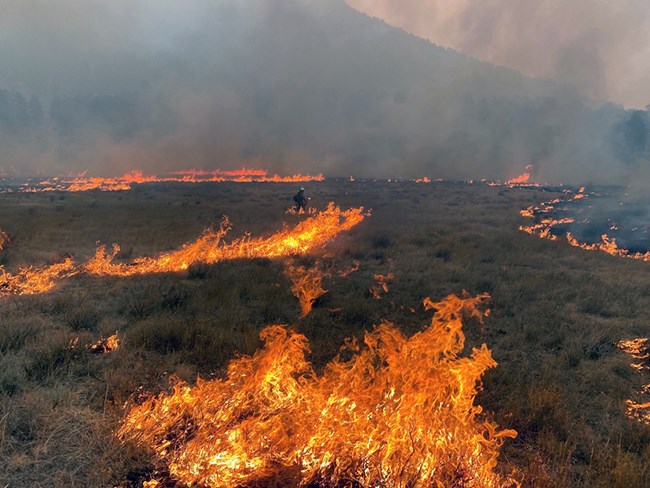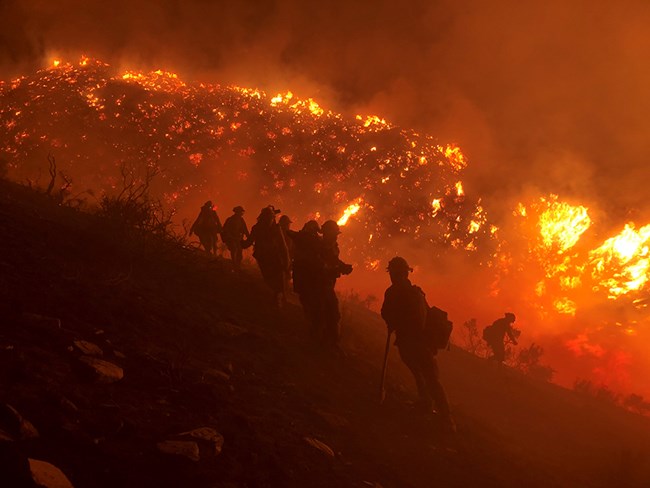Article
Planning for Wildfire Response in the Era of COVID-19: Alpine Hotshots, a Case Study

NPS/C KOPEK
The summer of 2020 presented a new set of challenges to firefighters as the global COVID-19 pandemic reshaped how people interact, gather, travel, and work. The National Park Service Alpine Hotshot Crew found innovative ways to mitigate the risk of exposure to firefighters, while continuing to provide their essential public service.
“Wildfires are going to happen whether we are ready for it or not,” noted Rocky Mountain National Park fire management officer Mike Lewelling. “Firefighters are essential to protecting lives, resources, and communities, which is why we have to mitigate possible COVID-19 virus exposure for fire personnel.”
Founded in 1981, the Alpine Hotshot Crew was one of the first NPS hotshot crews. Over the years, the crew has been stationed in Arizona, California, and Wyoming. They are currently based out of Rocky Mountain National Park in Colorado.
Working with the NPS Office of Public Health, the hotshot crew reviewed every aspect of their operations to mitigate crew members’ risk of exposure to the coronavirus.
“The safety of our firefighters and the public is our number one priority and we are taking COVID-19 very seriously,” said Alpine Hotshot Crew superintendent James Champ. “Our normal season preparations, including critical training, were done remotely to maintain social distancing. We took a proactive approach to develop strategies so we could be successful at providing a safe and healthy resource to support the interagency wildland fire response.”
Prior to new crew members’ arrival at Rocky Mountain National Park, the NPS implemented measures to reduce the risk of spreading infectious disease. Mitigation efforts included checking incoming personnel’s travel history and health. In addition, new workers checked-in one at a time to avoid cross-contamination.
This year, the 21-person crew trained and performed daily work tasks in smaller workgroups, helping to maintain social distancing and limit large group interactions. All staff were placed into housing where they had their own bedroom for at least two weeks after arrival. All critical training was done remotely while crew members were social distancing at personal residences. The Alpine Hotshots completed their on-boarding process and pre-season training with no major issues and were ready for wildfire assignments with their added mitigations.
Every crew member took their temperature in the morning and in the evening to track any potential infections. The crew followed CDC and NPS Office of Public Health guidance, including standard operating procedures for disinfecting vehicles, buildings, and equipment at the end of each shift.

During incident response, firefighters brought additional vehicles to carry extra gear to facilitate the crew being as self-sufficient as possible limiting all interactions with the public, other firefighters, and incident management personnel. They followed the latest CDC guidelines for social distancing when making stops for gas and food. While the hotshot crew was working on an incident, they were nearly self-sufficient, relying on MREs and their own food, and typically camping in a remote area.
